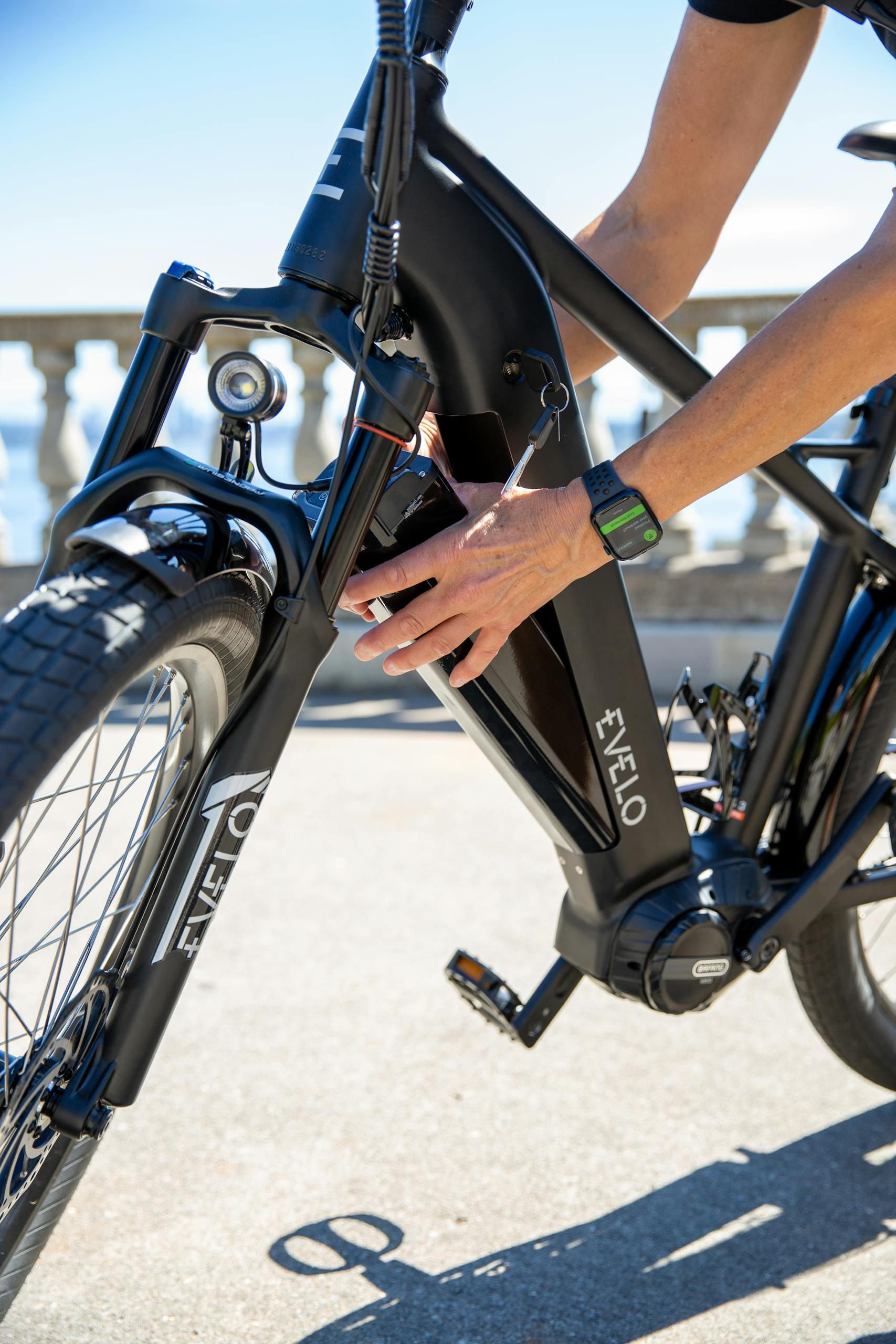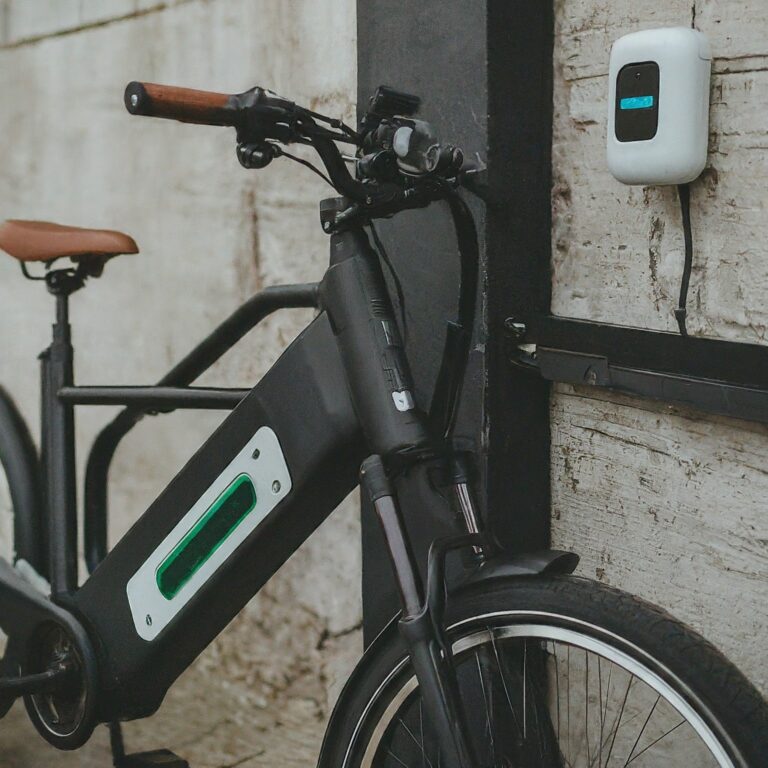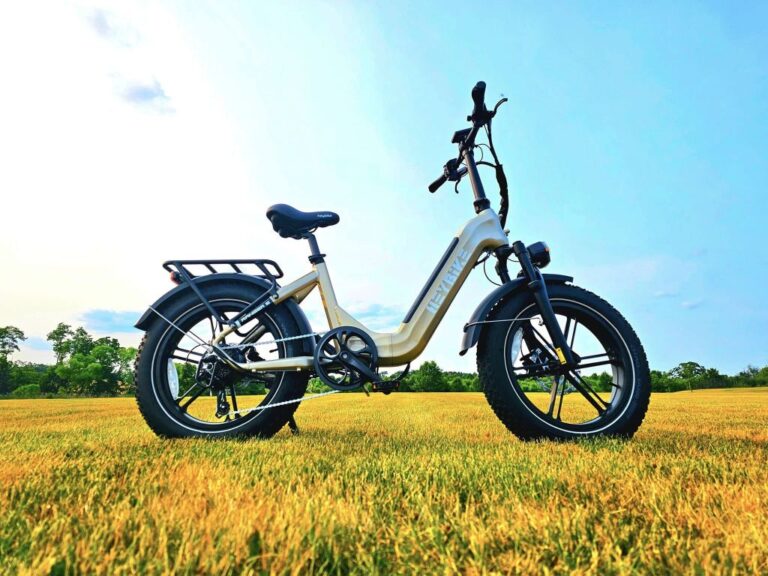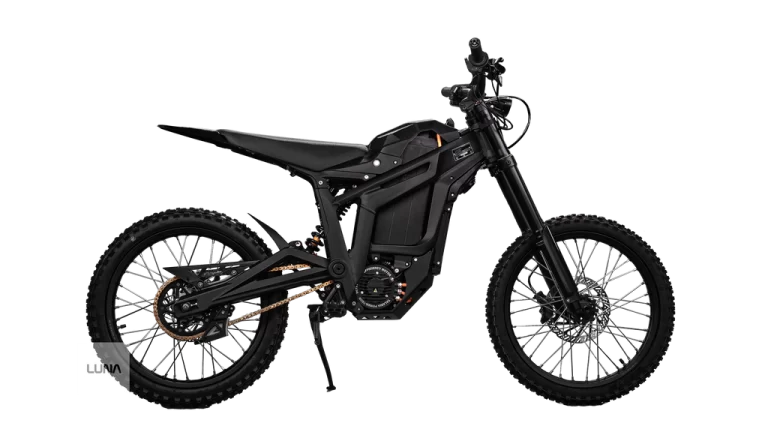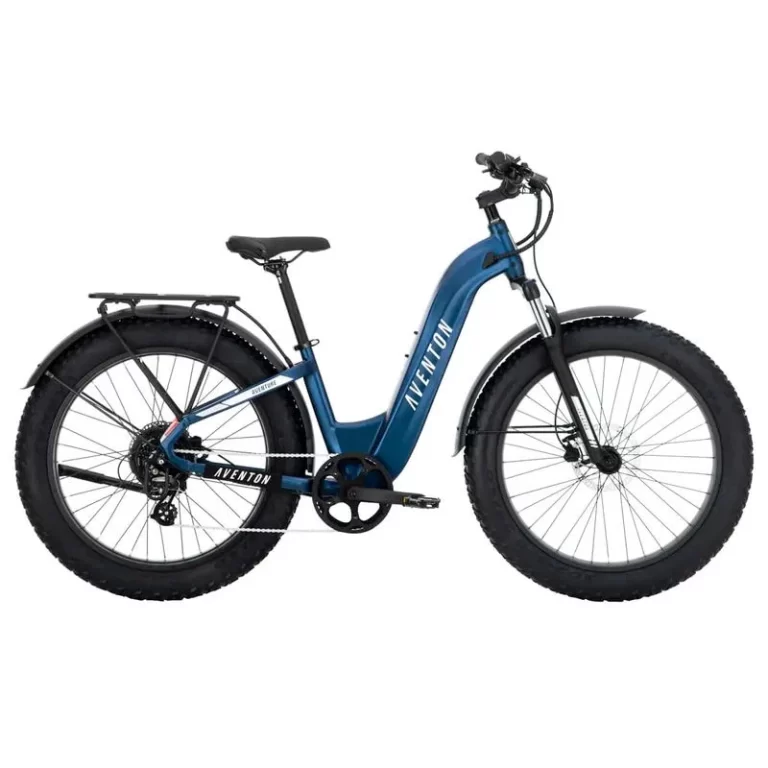Fall E-bike Rides: Maximize Range and Performance with These Tips!
Last Updated on July 16, 2024 by Kristina Grant
E-bikes are a fantastic way to get around, offering a fun, eco-friendly mode of transportation with the added benefit of pedal-assist. As the summer sun gives way to cooler autumn temperatures, many e-bike riders start to wonder how the changing seasons might affect their trusty steeds.
One crucial aspect of fall e-bike maintenance is ensuring your battery performs optimally in cooler weather. Lithium-ion batteries, the most common type used in e-bikes, can experience reduced range and performance in extreme temperatures. The good news is that with a few simple checks and adjustments to your riding habits, you can keep your e-bike battery happy and your fall rides enjoyable.
This guide will equip you with essential knowledge for taking care of your e-bike battery throughout the fall. We’ll cover everything from pre-ride voltage checks and cleaning procedures to storage best practices and tips to maximize your battery’s range in cooler temperatures. By following these steps, you’ll ensure a smooth transition into fall riding and extend the lifespan of your valuable e-bike battery.
Key Takeaways
- Regular voltage checks are crucial for maintaining optimal e-bike battery health. Consider using a built-in display, a phone app (if compatible with your e-bike), or a multimeter for precise readings.
- Extreme temperatures can affect e-bike battery performance. Ideally, charge your battery indoors at room temperature before your fall rides.
- Corroded or dirty battery contacts can hinder performance. Make a habit of visually inspecting and carefully cleaning the contacts with a soft, dry cloth when necessary.
- Proper storage is essential for maintaining battery health. Choose a cool, dry place with a moderate temperature range to store your e-bike battery during fall and winter months.
- Cooler fall weather can reduce e-bike battery range. Consider using a lower assist mode, planning efficient routes, and maintaining proper tire pressure to maximize your range.
- Warning signs of potential battery failure include reduced range, slow charging, erratic performance, unusual bulging or heat, and strange noises or odors. If you experience any of these, consult a qualified e-bike mechanic.
- By following these tips and adjusting your riding habits, you can ensure your e-bike battery performs optimally and extends its lifespan throughout the fall season.
Essential E-Bike Battery Checks Before Fall Rides: Optimizing Performance for Cooler Weather
As the summer heat fades, it’s vital to ensure your e-bike battery is ready to perform in cooler fall weather. Here are some essential checks to include in your pre-ride routine:
- Voltage Check: Regularly monitoring your battery’s voltage is key to maintaining optimal health. Many e-bikes have a built-in display that shows battery voltage. If yours doesn’t, investing in a multimeter can be a wise decision. A multimeter provides a more precise voltage reading, allowing you to identify potential issues early on. When searching for a suitable multimeter, look for options specifically designed for checking e-bike battery voltage.
- Temperature Matters: Extreme temperatures, both hot and cold, can significantly affect battery performance. During fall, it’s especially important to be mindful of cooler temperatures. Ideally, you’ll want to charge your battery indoors at room temperature (around 68°F or 20°C) before your ride. This ensures the battery starts at an optimal temperature and reduces stress on the system.
- Clean Connections: Corroded or dirty battery contacts can impede the flow of electricity, hindering your e-bike’s performance. Make it a habit to visually inspect the battery contacts for any signs of corrosion or grime. If cleaning is necessary, use a soft, dry cloth to carefully wipe down the contacts. Never use water or harsh chemicals, as this can damage the delicate components.
- Storage Smarts: When your e-bike isn’t in use, proper battery storage is crucial for maintaining its health and longevity. Choose a cool, dry place with a moderate temperature range for storage. Avoid storing your battery in extreme heat or cold, as this can accelerate degradation. Refer to your e-bike’s manual for specific storage recommendations, as temperature tolerances can vary slightly between models.
RELATED CONTENT
Checking E-Bike Battery Voltage: Apps vs. Multimeters
Convenience vs. Precision: Choosing the Right Tool
Monitoring your e-bike battery’s voltage is an important part of routine maintenance. There are two main options for checking voltage: using a phone app (if your e-bike offers such functionality) or using a multimeter. Let’s explore the pros and cons of each method:
- Phone App:
- Pros: Many modern e-bikes come with Bluetooth connectivity and companion phone apps. These apps often display various data points, including real-time battery voltage. This method is incredibly convenient, as you don’t need any additional tools and can check the voltage at a glance before your ride.
- Cons: App-based voltage readings might not always be as precise as those obtained with a dedicated tool. Additionally, not all e-bikes offer Bluetooth connectivity or companion apps.
- Multimeter:
- Pros: A multimeter provides a highly accurate reading of your e-bike battery’s voltage. This level of precision can be helpful for troubleshooting potential battery issues or monitoring the battery’s health over time. Multimeters are also quite versatile and can be used for various electrical measurements beyond e-bikes.
- Cons: Using a multimeter requires a bit more technical knowledge compared to simply checking an app. You’ll need to understand how to set the multimeter to the correct voltage range and safely connect the probes to the battery terminals (refer to your multimeter’s manual for specific instructions).
Choosing the Right Multimeter:
If you decide to go the multimeter route, look for options with features specifically suited for e-bike battery checks. Here are some factors to consider:
- Auto-ranging: This feature automatically selects the appropriate voltage range for the measurement, eliminating the need for manual adjustments and reducing the risk of errors.
- Large, easy-to-read display: A clear display is essential for quickly and accurately reading the voltage measurement.
- Compact size: If you plan on carrying the multimeter with you on rides for troubleshooting purposes, a compact and portable design is ideal.
By considering these factors, you can choose a multimeter that effectively meets your e-bike battery checking needs.
Maximizing Your E-Bike Battery Range in Fall: Tips for Cooler Rides
As fall sets in and temperatures dip, you might notice a decrease in your e-bike battery’s range. This is because cooler temperatures can affect the chemical reactions within the battery, reducing its overall efficiency. However, there are several strategies you can employ to extend your battery life and keep those fall rides enjoyable:
- Embrace Eco Mode: Many e-bikes offer different power assistance levels. During fall, consider using a lower assist mode, such as “Eco,” more frequently. This reduces the strain on the battery and allows you to travel farther on a single charge. While you might not reach top speeds, you’ll still benefit from pedal assistance and enjoy a more efficient ride.
- Plan Your Route Wisely: Strategic route planning can significantly impact your battery range. Opt for flatter terrain whenever possible, as hills require more motor assistance and drain the battery faster. Additionally, consider avoiding strong headwinds, which can also increase energy consumption. By choosing routes with minimal elevation changes and favorable wind conditions, you can maximize the distance you travel on a single charge.
- Tire Pressure Matters: Maintaining proper tire pressure is crucial for optimal e-bike performance year-round. Underinflated tires create more rolling resistance, forcing the motor to work harder and consume more battery power. Regularly check your tire pressure and inflate them to the manufacturer’s recommended PSI level. This simple step can significantly improve your e-bike’s efficiency and extend your battery range.
- Maintain Your E-Bike: Regular maintenance, including cleaning and lubricating the drivetrain, ensures your e-bike operates smoothly and efficiently. A well-maintained drivetrain reduces friction and allows the motor to work less, ultimately saving battery power. By keeping your e-bike in top shape, you’ll contribute to a longer battery life and a more enjoyable riding experience.
- Embrace the Power of Pedaling: While e-bikes offer the luxury of pedal-assist, incorporating some good old-fashioned pedaling into your fall rides can significantly improve your battery range. By contributing more leg power, you’ll reduce the reliance on the motor and extend the distance you can travel on a single charge. Additionally, incorporating some pedaling is a great way to get some exercise during your fall e-bike adventures.
By following these tips and adjusting your riding habits for the cooler fall weather, you can ensure your e-bike battery performs optimally and continues to power your fall adventures. Remember, a little planning and a focus on efficiency go a long way in maximizing your e-bike battery range throughout the season.
Warning Signs of E-Bike Battery Failure: Knowing When It’s Time for a Replacement
Just like any other component on your e-bike, the battery has a finite lifespan. Over time, and with repeated use, the battery’s capacity will naturally degrade. However, there are some telltale signs that can indicate a more serious issue and potentially signal the need for a battery replacement. Here’s what to watch out for:
- Reduced Range: This is one of the most common warning signs. If you find yourself consistently needing to recharge your battery after significantly shorter rides compared to when it was new, it could be a sign of reduced capacity. While factors like colder weather can also affect range, a noticeable and persistent drop is a cause for concern.
- Slow Charging: A healthy e-bike battery should charge within the normal timeframe specified by the manufacturer. If you notice that it’s taking significantly longer to reach a full charge, it could be an indication of internal degradation within the battery cells.
- Erratic Performance: A properly functioning e-bike battery should deliver consistent power output. If you experience sudden drops in power, hesitation, or fluctuations in motor assistance while riding, it could be a sign of a failing battery. These issues can be unpredictable and potentially dangerous, so it’s important to address them promptly.
- Unusual Bulging or Heat: Lithium-ion batteries, the most common type used in e-bikes, should never bulge or deform. If you notice any swelling in the battery casing, stop using it immediately and consult a qualified e-bike mechanic. Additionally, excessive heat generation during charging or use is another red flag.
- Strange Noises or Odors: A healthy e-bike battery should operate quietly. If you hear any hissing, crackling, or other unusual noises coming from the battery, it’s a cause for concern. Similarly, any strong or unpleasant odors emanating from the battery can indicate a potential safety hazard.
It’s important to note that these warning signs don’t necessarily guarantee a failing battery. Other factors, such as extreme temperatures or faulty connections, can sometimes mimic these symptoms. However, if you experience any of these issues, it’s crucial to err on the side of caution. Stop using your e-bike, consult a qualified mechanic for diagnosis, and follow their recommendations. Remember, a timely replacement can prevent potential safety hazards and ensure a smooth, enjoyable e-bike riding experience.
FAQs
A: In most cases, it’s perfectly safe to leave your e-bike battery on the charger overnight. Modern e-bike chargers automatically shut off once the battery reaches a full charge. However, it’s always a good practice to consult your e-bike’s manual for specific charging recommendations.
A: The lifespan of an e-bike battery depends on various factors, including the number of charge cycles, depth of discharge, and storage conditions. Generally, a well-maintained e-bike battery can last anywhere from 3 to 5 years. However, if you experience any of the warning signs mentioned earlier, such as significantly reduced range or erratic performance, it might be time for a replacement.
A: Absolutely! By following the tips outlined in this blog post, such as proper charging practices, storing the battery in moderate temperatures, and maintaining your e-bike, you can significantly contribute to a longer battery lifespan.
A: Replacement e-bike batteries can be purchased from authorized e-bike dealers, online retailers specializing in e-bike parts, or directly from the e-bike manufacturer. It’s crucial to ensure you purchase a battery that is compatible with your specific e-bike model.
A: While regular maintenance tasks like cleaning the contacts can be done at home, for more complex procedures or if you suspect a serious issue with your battery, it’s always recommended to consult a qualified e-bike mechanic. They have the expertise and tools to diagnose problems and ensure your battery is functioning safely and efficiently.
Conclusion:
By following the tips and information provided in this blog post, you can ensure your e-bike battery performs optimally throughout the fall season. Remember, a little preventative maintenance and adjustments to your riding habits go a long way in maximizing battery range and extending its lifespan.
Ready to share your fall e-bike adventures? Visit our Facebook page to share your favorite fall riding routes, tips, and photos with fellow riders. We’d love to hear about your experiences and help you make the most of your fall e-bike adventures!
For even more in-depth information on e-bike battery care and maintenance, consider consulting these resources:
- National Renewable Energy Laboratory – Battery Basics This comprehensive resource from the National Renewable Energy Laboratory provides a wealth of information about battery technology, including lithium-ion batteries commonly used in e-bikes.
- Ebike School – Ebike Battery Bible This informative guide by eBike School delves deeper into various aspects of e-bike batteries, from understanding different battery types to maximizing their lifespan.
With proper care and these helpful resources, you can keep your e-bike battery happy and your fall riding adventures rolling smoothly. So, get out there, enjoy the cooler weather, and embrace the thrill of e-biking throughout the fall season!
Kristina Grant is not just an enthusiast but a true authority on electric bikes. Nestled in the coastal beauty of Virginia, Kristina has found the perfect backdrop for her passion for electric biking. As a dedicated wife and homeschooling mom, her life revolves around family, faith, and the thrill of adventure.
Originally hailing from Ohio, Kristina's journey with electric bikes began as a curiosity and quickly evolved into a deep expertise. Her blog is a testament to her love for electric biking, combining her fascination for eco-friendly transportation with her coastal lifestyle.
When she's not cruising the beach on her electric bike, you'll find Kristina indulging in her other loves: long walks along the shore, getting lost in a good book, and cherishing moments with her loved ones. With a heart as big as her love for animals, especially cats, Kristina brings a unique perspective to the electric bike world, grounded in her strong faith in God and her dedication to a sustainable lifestyle.
Through her blog, Kristina shares her extensive knowledge of electric bikes, offering valuable insights, tips, and recommendations to fellow enthusiasts. Whether you're a seasoned rider or a newcomer to the electric bike scene, Kristina's blog is your go-to source for all things electric biking, fueled by her passion, expertise, and the scenic beauty of coastal Virginia.

